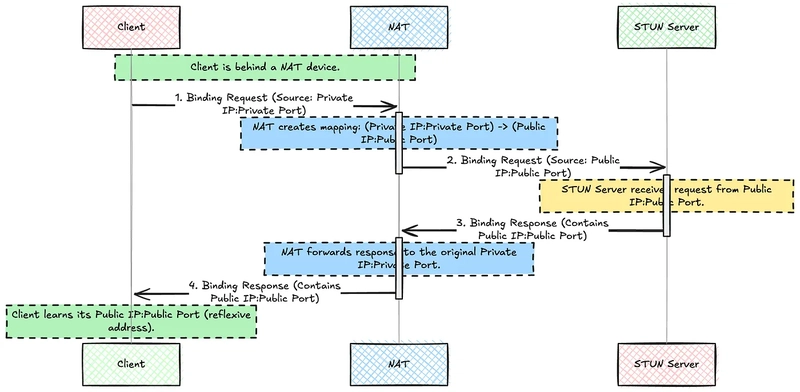When AI Goes Bonkers: Unraveling the Mystery of LLM Hallucinations
Welcome to the Twilight Zone of AI Picture this: You're chatting with an AI, asking it about the history of pizza. Suddenly, it starts telling you about the great Pizza War of 1873 when the Margherita militia fought against the evil Pineapple forces. Wait, what? If you've ever had an AI confidently spout complete nonsense, congratulations! You've just witnessed an LLM hallucination. It's like that friend who insists they remember something that never happened, except this friend can generate essays about it in seconds. But why do these AI brain farts happen, and how can we make them less... well, hallucinatory? Buckle up, fellow code warriors, as we dive into the wacky world of Large Language Model (LLM) hallucinations! The Anatomy of an AI Fever Dream What Are LLM Hallucinations? LLM hallucinations are when our AI buddies generate text that's fluent, confident, and utterly wrong. It's like they're pulling facts out of a parallel universe where unicorns run Silicon Valley and coding is done by interpretive dance. These aren't just simple mistakes. Oh no, these are elaborately incorrect statements delivered with the conviction of a used car salesman on his fifth espresso. Why Do They Happen? The Data Diet: LLMs are trained on massive amounts of data. Imagine force-feeding a computer the entire internet. Now, think about all the nonsense that exists online. Yeah, our poor AI friend is trying to make sense of all that. Pattern Matching Gone Wild: These models are essentially super-powered pattern matching machines. Sometimes, they connect dots that... well, shouldn't be connected. It's like playing Six Degrees of Kevin Bacon, but with facts, and Kevin Bacon turns out to be a sentient toaster. Lack of Real Understanding: LLMs don't truly understand the world like we do. They're just really good at predicting what words should come next based on patterns they've seen. It's like someone who's memorized a cookbook but has never actually cooked anything. Overconfidence: These models don't have a built-in uncertainty meter. When they generate something, they don't say, "I'm not sure about this." They just go for it, like that one friend who's always 100% certain about everything, even when they're suggesting you can definitely jump that canyon on your bicycle. Taming the AI Imagination Now that we know why our AI pals sometimes go off the rails, how do we keep them on track? Here are some strategies to reduce hallucinations: 1. Fact-Checking and Verification Implement a system where the AI's output is cross-checked against reliable sources. It's like having a responsible adult in the room when your imaginative kid is telling stories. def verify_fact(ai_statement): reliable_sources = [Wikipedia(), Britannica(), ScienceDirect()] return any(source.confirm(ai_statement) for source in reliable_sources) 2. Constrain the Context Limit the AI's responses to specific domains or datasets. It's like putting blinders on a horse, except our horse is made of silicon and can write sonnets. function constrainContext(userQuery, allowedTopics) { return allowedTopics.some(topic => userQuery.includes(topic)); } 3. Implement Uncertainty Thresholds Train the model to express uncertainty when its confidence is low. It's teaching the AI to say "I'm not sure" instead of confidently stating that the moon is made of cheese. def generate_response(query, confidence_threshold=0.8): response, confidence = ai_model.generate(query) if confidence model.generate(query)); return findMostCommonResponse(responses); } 5. Continuous Learning and Feedback Implement a system where human feedback is used to fine-tune the model. It's like having a never-ending code review, but for an AI's thoughts. def learn_from_feedback(model, user_feedback): if user_feedback == "hallucination": model.fine_tune(avoid_last_response=True) elif user_feedback == "accurate": model.reinforce(last_response=True) The Human Touch in a Digital World Remember, as amazing as these AI models are, they're tools, not oracles. They need our human touch, our critical thinking, and occasionally, our sense of humor to truly shine. As developers, it's our job to build the guardrails that keep AI on the right track. We're not just coding; we're teaching machines how to think more like humans - minus the tendency to binge-watch cat videos at 3 AM. Wrapping Up LLM hallucinations are a fascinating quirk in the world of AI. They remind us that even as our digital creations become more advanced, they still need our guidance, creativity, and occasionally, a reality check. As we continue to push the boundaries of what's possible with AI, let's remember to approach it with a mix of wonder, skepticism, and a healthy dose of humor. After all, in the world of tech, if you're not laughing, you'r

Welcome to the Twilight Zone of AI
Picture this: You're chatting with an AI, asking it about the history of pizza. Suddenly, it starts telling you about the great Pizza War of 1873 when the Margherita militia fought against the evil Pineapple forces. Wait, what?
If you've ever had an AI confidently spout complete nonsense, congratulations! You've just witnessed an LLM hallucination. It's like that friend who insists they remember something that never happened, except this friend can generate essays about it in seconds.
But why do these AI brain farts happen, and how can we make them less... well, hallucinatory? Buckle up, fellow code warriors, as we dive into the wacky world of Large Language Model (LLM) hallucinations!
The Anatomy of an AI Fever Dream
What Are LLM Hallucinations?
LLM hallucinations are when our AI buddies generate text that's fluent, confident, and utterly wrong. It's like they're pulling facts out of a parallel universe where unicorns run Silicon Valley and coding is done by interpretive dance.
These aren't just simple mistakes. Oh no, these are elaborately incorrect statements delivered with the conviction of a used car salesman on his fifth espresso.
Why Do They Happen?
The Data Diet: LLMs are trained on massive amounts of data. Imagine force-feeding a computer the entire internet. Now, think about all the nonsense that exists online. Yeah, our poor AI friend is trying to make sense of all that.
Pattern Matching Gone Wild: These models are essentially super-powered pattern matching machines. Sometimes, they connect dots that... well, shouldn't be connected. It's like playing Six Degrees of Kevin Bacon, but with facts, and Kevin Bacon turns out to be a sentient toaster.
Lack of Real Understanding: LLMs don't truly understand the world like we do. They're just really good at predicting what words should come next based on patterns they've seen. It's like someone who's memorized a cookbook but has never actually cooked anything.
Overconfidence: These models don't have a built-in uncertainty meter. When they generate something, they don't say, "I'm not sure about this." They just go for it, like that one friend who's always 100% certain about everything, even when they're suggesting you can definitely jump that canyon on your bicycle.
Taming the AI Imagination
Now that we know why our AI pals sometimes go off the rails, how do we keep them on track? Here are some strategies to reduce hallucinations:
1. Fact-Checking and Verification
Implement a system where the AI's output is cross-checked against reliable sources. It's like having a responsible adult in the room when your imaginative kid is telling stories.
def verify_fact(ai_statement):
reliable_sources = [Wikipedia(), Britannica(), ScienceDirect()]
return any(source.confirm(ai_statement) for source in reliable_sources)
2. Constrain the Context
Limit the AI's responses to specific domains or datasets. It's like putting blinders on a horse, except our horse is made of silicon and can write sonnets.
function constrainContext(userQuery, allowedTopics) {
return allowedTopics.some(topic => userQuery.includes(topic));
}
3. Implement Uncertainty Thresholds
Train the model to express uncertainty when its confidence is low. It's teaching the AI to say "I'm not sure" instead of confidently stating that the moon is made of cheese.
def generate_response(query, confidence_threshold=0.8):
response, confidence = ai_model.generate(query)
if confidence < confidence_threshold:
return "I'm not certain about this, but..."
return response
4. Use Multiple Models
Employ an ensemble of models and compare their outputs. If one model starts raving about pizza wars, the others can vote it down.
function consensusResponse(query) {
const models = [gpt3, gpt4, llamaModel, palmModel];
const responses = models.map(model => model.generate(query));
return findMostCommonResponse(responses);
}
5. Continuous Learning and Feedback
Implement a system where human feedback is used to fine-tune the model. It's like having a never-ending code review, but for an AI's thoughts.
def learn_from_feedback(model, user_feedback):
if user_feedback == "hallucination":
model.fine_tune(avoid_last_response=True)
elif user_feedback == "accurate":
model.reinforce(last_response=True)
The Human Touch in a Digital World
Remember, as amazing as these AI models are, they're tools, not oracles. They need our human touch, our critical thinking, and occasionally, our sense of humor to truly shine.
As developers, it's our job to build the guardrails that keep AI on the right track. We're not just coding; we're teaching machines how to think more like humans - minus the tendency to binge-watch cat videos at 3 AM.
Wrapping Up
LLM hallucinations are a fascinating quirk in the world of AI. They remind us that even as our digital creations become more advanced, they still need our guidance, creativity, and occasionally, a reality check.
As we continue to push the boundaries of what's possible with AI, let's remember to approach it with a mix of wonder, skepticism, and a healthy dose of humor. After all, in the world of tech, if you're not laughing, you're probably crying over a bug that shouldn't exist.
So, keep coding, keep questioning, and keep your AI friends grounded in reality. And remember, if an AI tries to convince you it's discovered a new element called 'Coderinium', it might be time to check its circuits!
If you enjoyed this journey through the quirky world of AI hallucinations, follow me for more tech tales and coding capers. I promise my next post won't be about the secret underground civilization of sentient semicolons... unless the AI insists it's real, of course!







































































































































































![[The AI Show Episode 145]: OpenAI Releases o3 and o4-mini, AI Is Causing “Quiet Layoffs,” Executive Order on Youth AI Education & GPT-4o’s Controversial Update](https://www.marketingaiinstitute.com/hubfs/ep%20145%20cover.png)

































































































































![From Art School Drop-out to Microsoft Engineer with Shashi Lo [Podcast #170]](https://cdn.hashnode.com/res/hashnode/image/upload/v1746203291209/439bf16b-c820-4fe8-b69e-94d80533b2df.png?#)









































































































(1).jpg?#)






























_Inge_Johnsson-Alamy.jpg?width=1280&auto=webp&quality=80&disable=upscale#)















































































































![Apple Developing AI 'Vibe-Coding' Assistant for Xcode With Anthropic [Report]](https://www.iclarified.com/images/news/97200/97200/97200-640.jpg)
![Apple's New Ads Spotlight Apple Watch for Kids [Video]](https://www.iclarified.com/images/news/97197/97197/97197-640.jpg)







































































![[Weekly funding roundup April 26-May 2] VC inflow continues to remain downcast](https://images.yourstory.com/cs/2/220356402d6d11e9aa979329348d4c3e/WeeklyFundingRoundupNewLogo1-1739546168054.jpg)




























